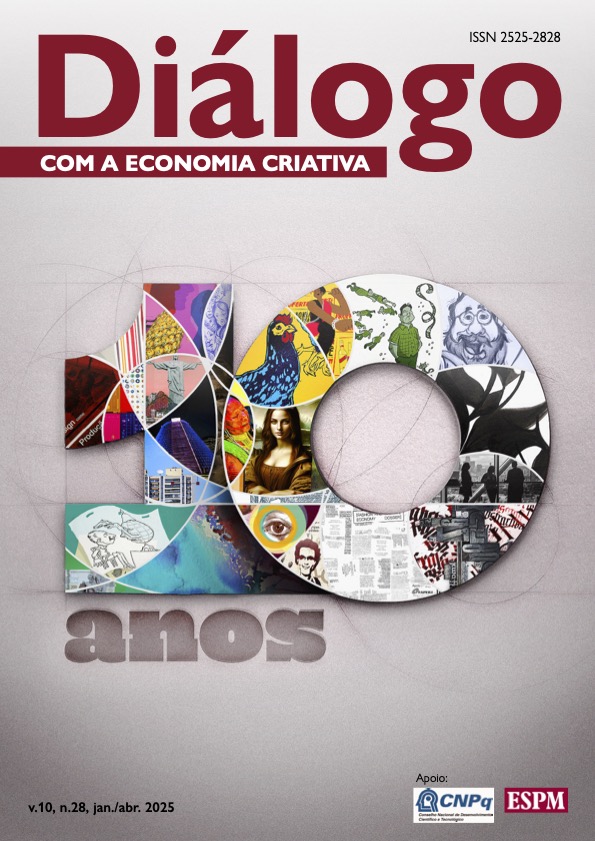Rio of Imaginaries: City, Mega-Events and Strategic Planning
DOI:
https://doi.org/10.22398/2525-2828.92558-72Keywords:
Rio de Janeiro, mega-events, imaginary, strategic planningAbstract
From urban administrators to artists, through entrepreneurs and advertisers, the “Rio” brand is known and consumed worldwide. The media projection that the city had during the preparations and the realization of the 2016 Olympic Games enabled the construction of an imaginary, which is widely used in the intention of legitimizing institutional practices that modified the space and re adjusted it to the interests of governmental and business coalitions. This governance model looks at the city and manages it, literally, as a commodity that must be valued and worshipped in order to project itself in an international market where it competes with other cities. In this article, we intend to discuss the mutations of Rio (and the Rio brand) using as parameters, in addition to the historical context, the Passos Reform in the early twentieth century and the interventions operat ed in the city with a view to the World Cup and the Olympics.
References
ABREU, Mauricio de A. A evolução urbana do Rio de Janeiro. Rio de Janeiro, RJ: IPP, 2008.
ANDREATTA, Verena. Cidades Quadradas Paraísos Circulares: os planos urbanísticos do Rio de Janeiro no século XIX. Rio de Janeiro, RJ: Mauad X, 2006.
CHALHOUB, Sandra Lauderdale. Trabalho, Lar e Botequim: o cotidiano dos trabalhadores no Rio de Janeiro. Campinas, SP: Editora da Unicamp, 2001.
CORREIA, Carlus Augustus Jourand; SOARES, Antonio Jorge Gonçalves. Aproximações e Distanciamentos Entre as Copas de 1950 e de 2014: apontamentos sobre as transformações no futebol e no Brasil. Recorde: Revista de História do Esporte, Rio de Janeiro, v. 8, n. 1, p. 1-24, jan./jun. 2015.
DEBORD, Guy. A Sociedade do Espetáculo. Rio de Janeiro, RJ: Contraponto, 1997.
EAGLETON, Terry. A Ideologia da Estética. Rio de Janeiro, RJ: Zahar, 1993.
FERNANDES, Florestan. A revolução burguesa no Brasil. São Paulo, SP: Globo, 2005.
FILHO, André; MIRANDA, Aurora. Cidade Maravilhosa. Rio de Janeiro: Gravadora Odeon, 1934.
FONTENELLE, Isleide Arruda. O Nome da Marca: McDonald’s, fetichismo e cultura descartável. São Paulo, SP: Boitempo, 2002.
FREITAS, Ricardo Ferreira. Rio de Janeiro, lugar de eventos: das exposições do início do século XX aos megaeventos contemporâneos. In: COMPÓS, 20., 2011, Porto Alegre. Anais [...]. Porto Alegre: Universidade Federal do Rio Grande do Sul, 2011. p. 1-12.
HARVEY, David. A Produção Capitalista do Espaço. São Paulo, SP: Annablume, 2005.
JAGUARIBE, Beatriz. Imaginando a Cidade Maravilhosa: modernidade, espetáculo e espaços urbanos. In: COMPÓS, 20., 2011, Porto Alegre. Anais [...]. Porto Alegre: Universidade Federal do Rio Grande do Sul, 2011. p. 1-15.
JAMESON, Fredric. Pós-Modernismo: a lógica cultural do capitalismo tardio. Rio de Janeiro, RJ: Ática, 1996.
LEVY, Ruth. Entre palácios e pavilhões: a arquitetura efêmera da Exposição Nacional de 1908. Rio de Janeiro, RJ: EBA/UFRJ, 2008.
LEVY, Ruth. A Exposição do Centenário e o meio arquitetônico carioca no início dos anos 1920. Rio de Janeiro: EBA/UFRJ, 2010.
REIS, Patrícia Cerqueira. Rio de Janeiro, uma cidade-global? Uma reflexão sobre a construção da marca Rio. São Paulo, SP: ECA/USP, 2016.
SÁNCHEZ, Fernanda. A reinvenção das cidades para um mercado mundial. Chapecó, PR: Argos, 2010.
SENNETT, Richard. Carne e Pedra. Rio de Janeiro, RJ: Record, 1994.
TEIXEIRA, Clarissa Stefani; ADÁN, Carmen; HUERTA, Josep Miquel Piqué; GASPAR, Jadhi Vincki. O processo de revitalização urbana: economia criativa e design. e-Revista LOGO, v. 5, n. 2, p. 37-56, 2016.
VAINER, Carlos B. Pátria, empresa e mercadoria: notas sobre a estratégia discursiva do planejamento estratégico urbano. In: ARANTES, Otília; VAINER, Carlos; MARICATO, Ermínia. (org.). A cidade do pensamento único: desmanchando consensos. Petrópolis, RJ: Vozes, 2000.
Downloads
Published
How to Cite
Issue
Section
License

This work is licensed under a Creative Commons Attribution-NonCommercial-NoDerivatives 4.0 International License.
The copyright for articles published in this journal belongs to the author, with first publication rights to the journal.
We emphasize that the responsibility for the articles is exclusive to the author(s) and does not necessarily reflect the opinion of the Editors or ESPM.








